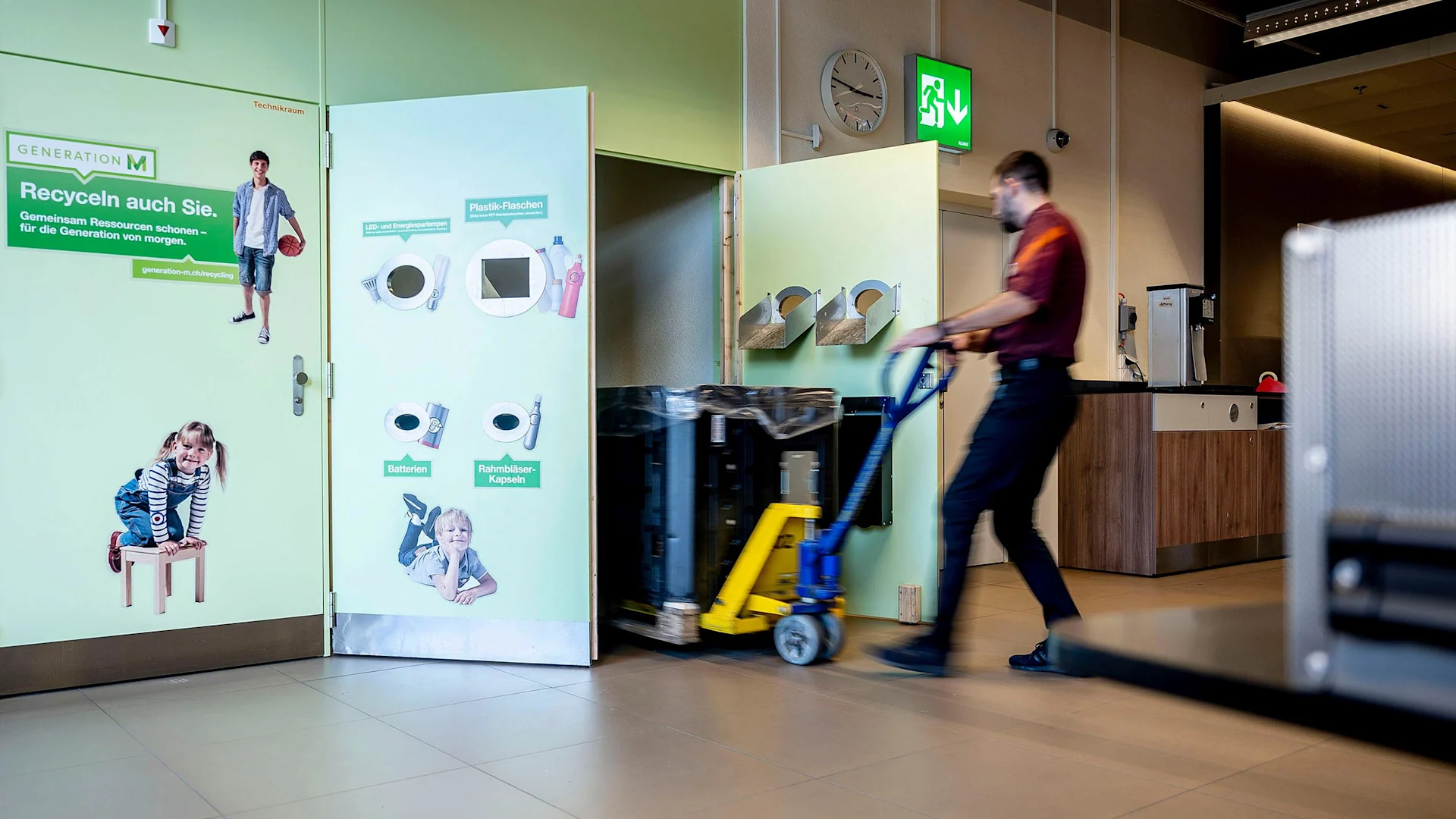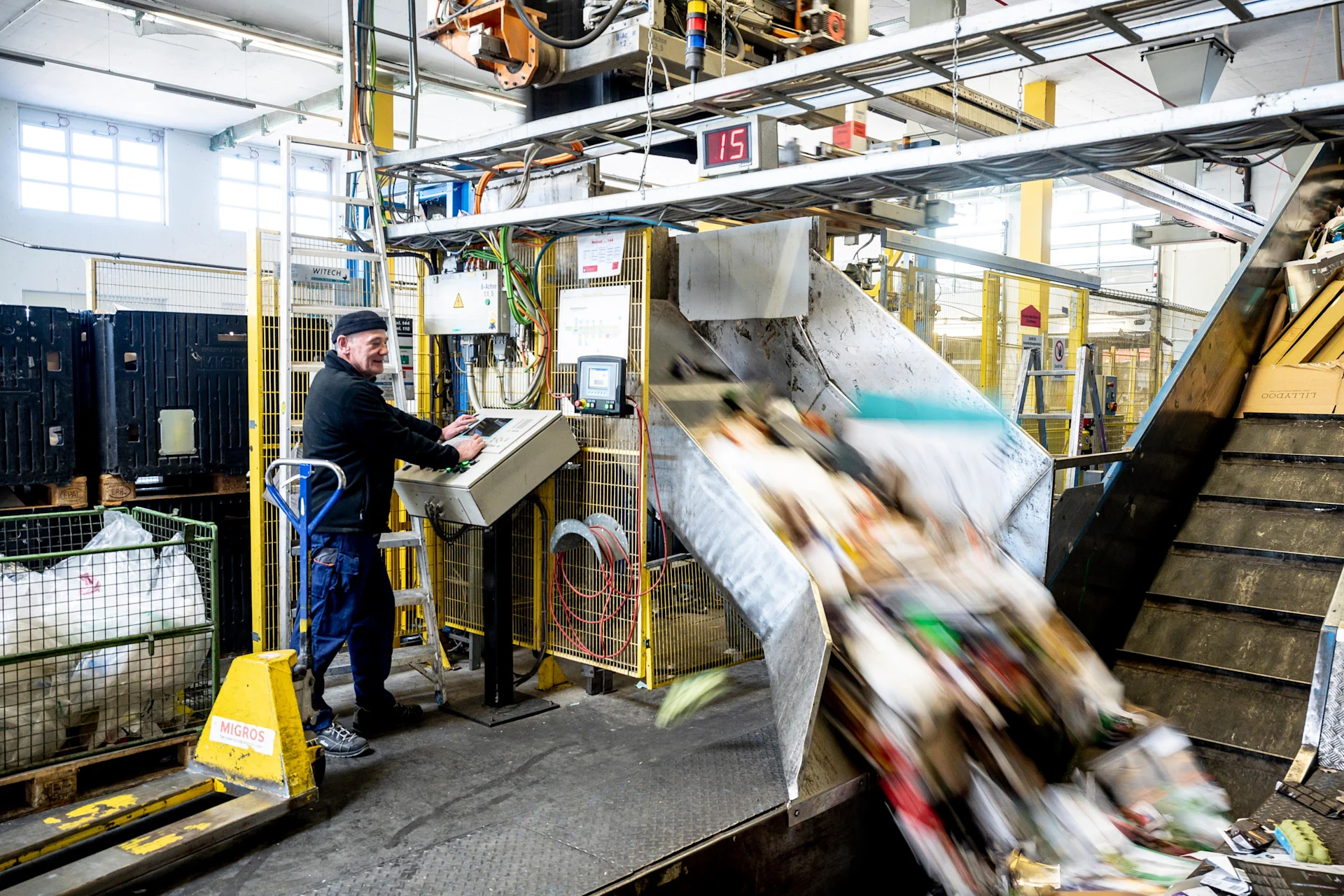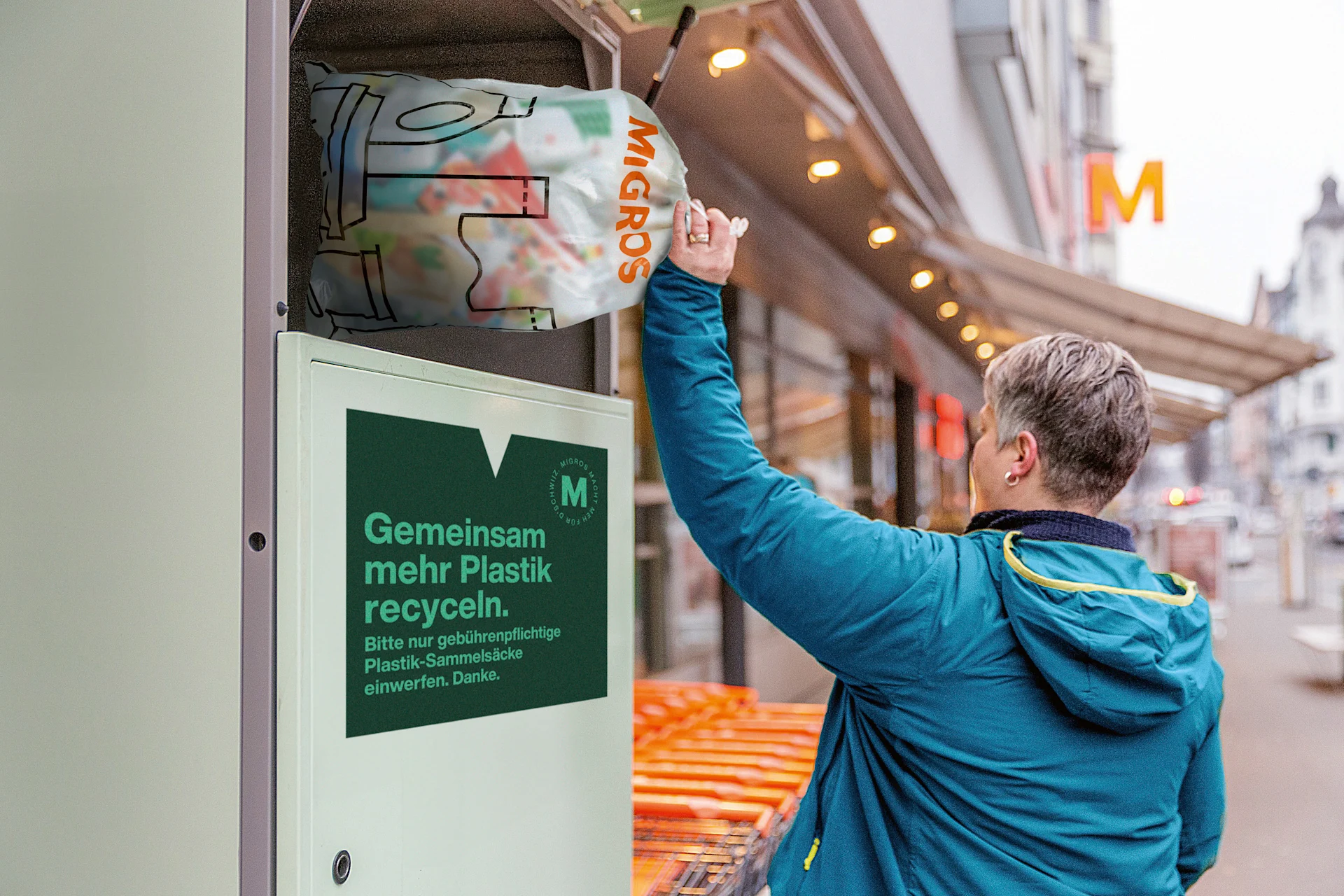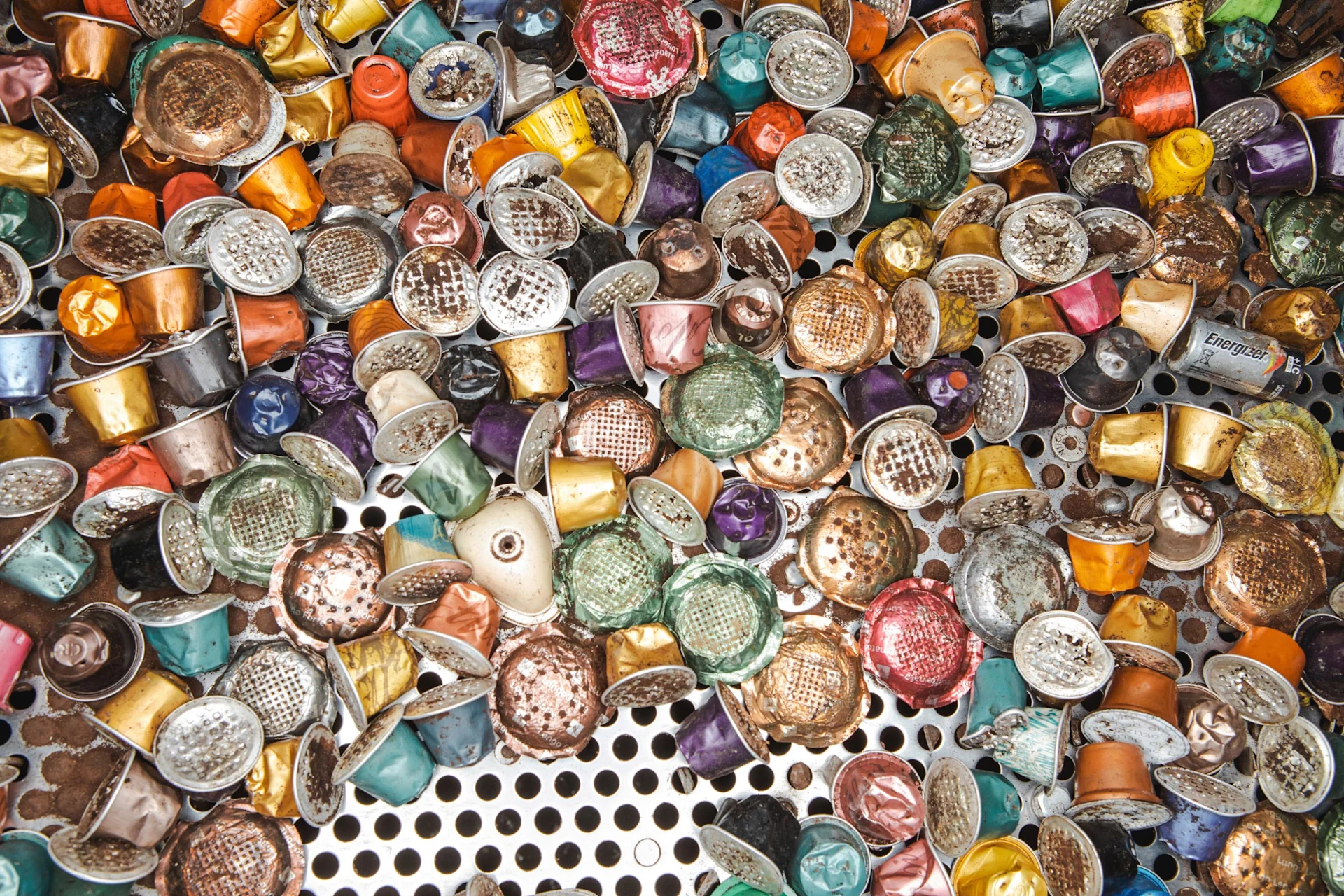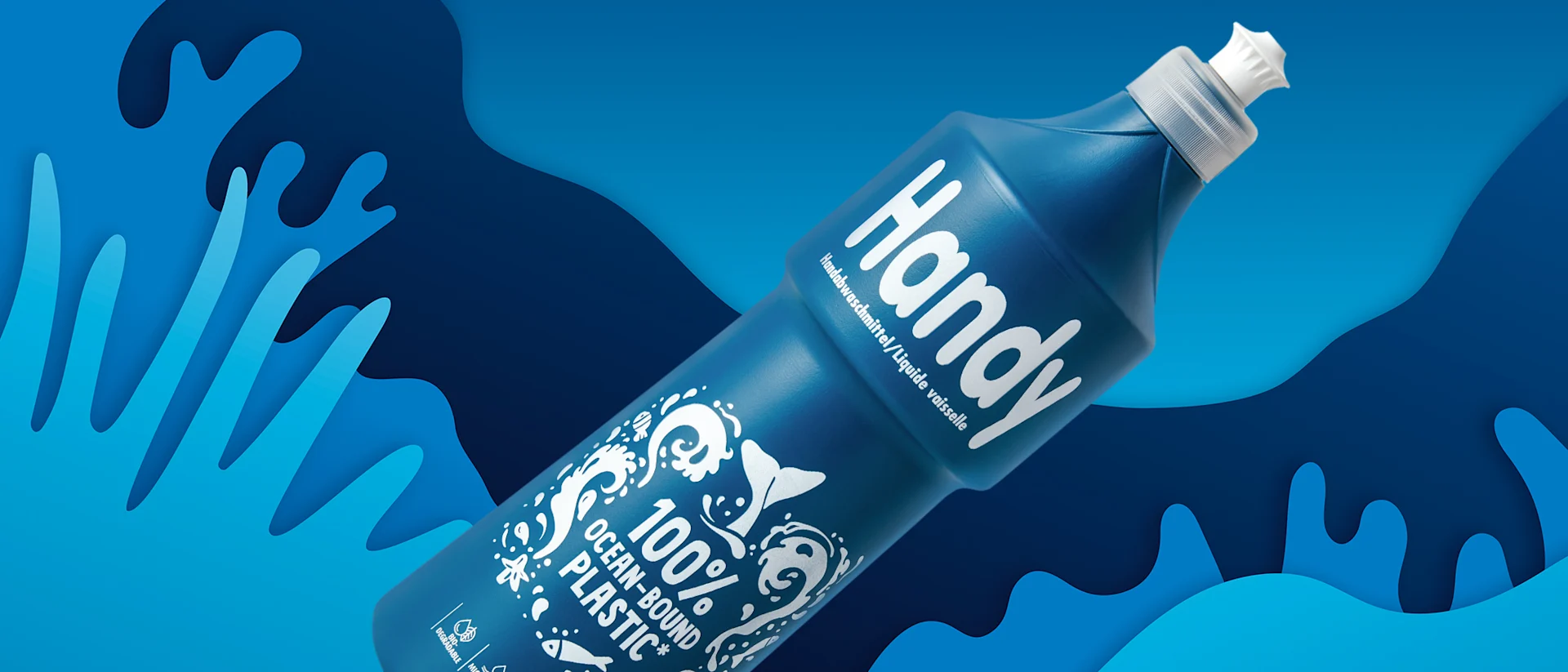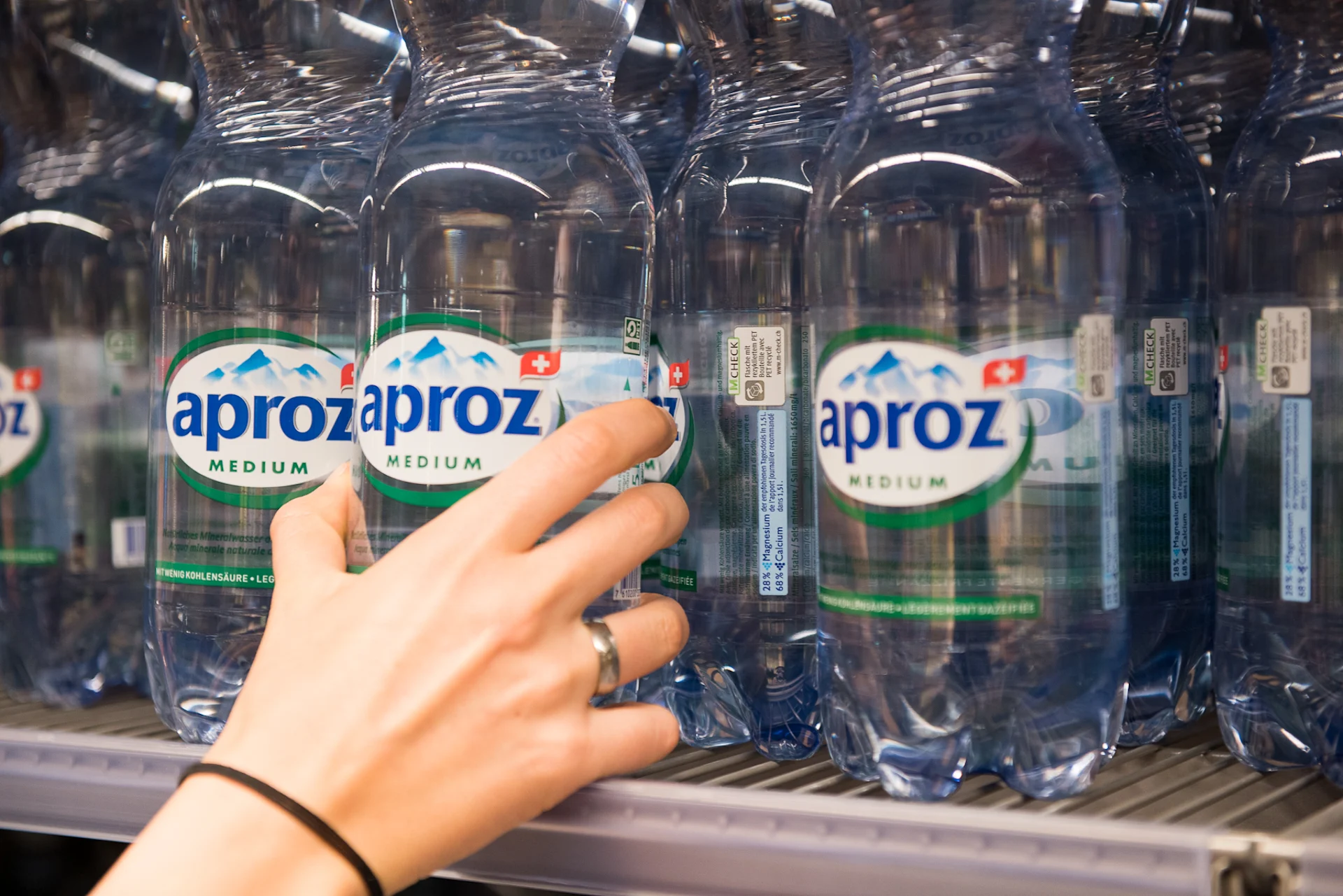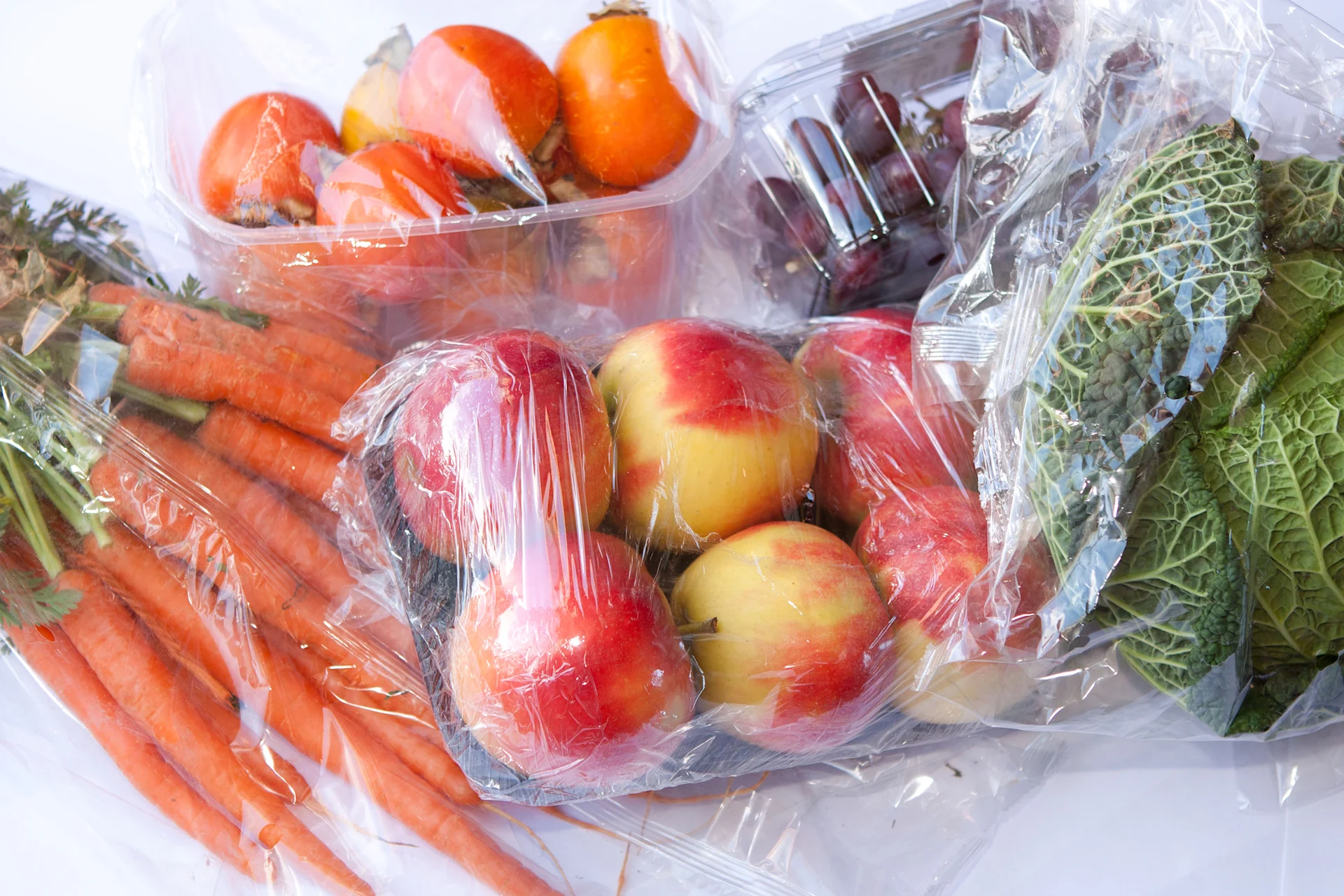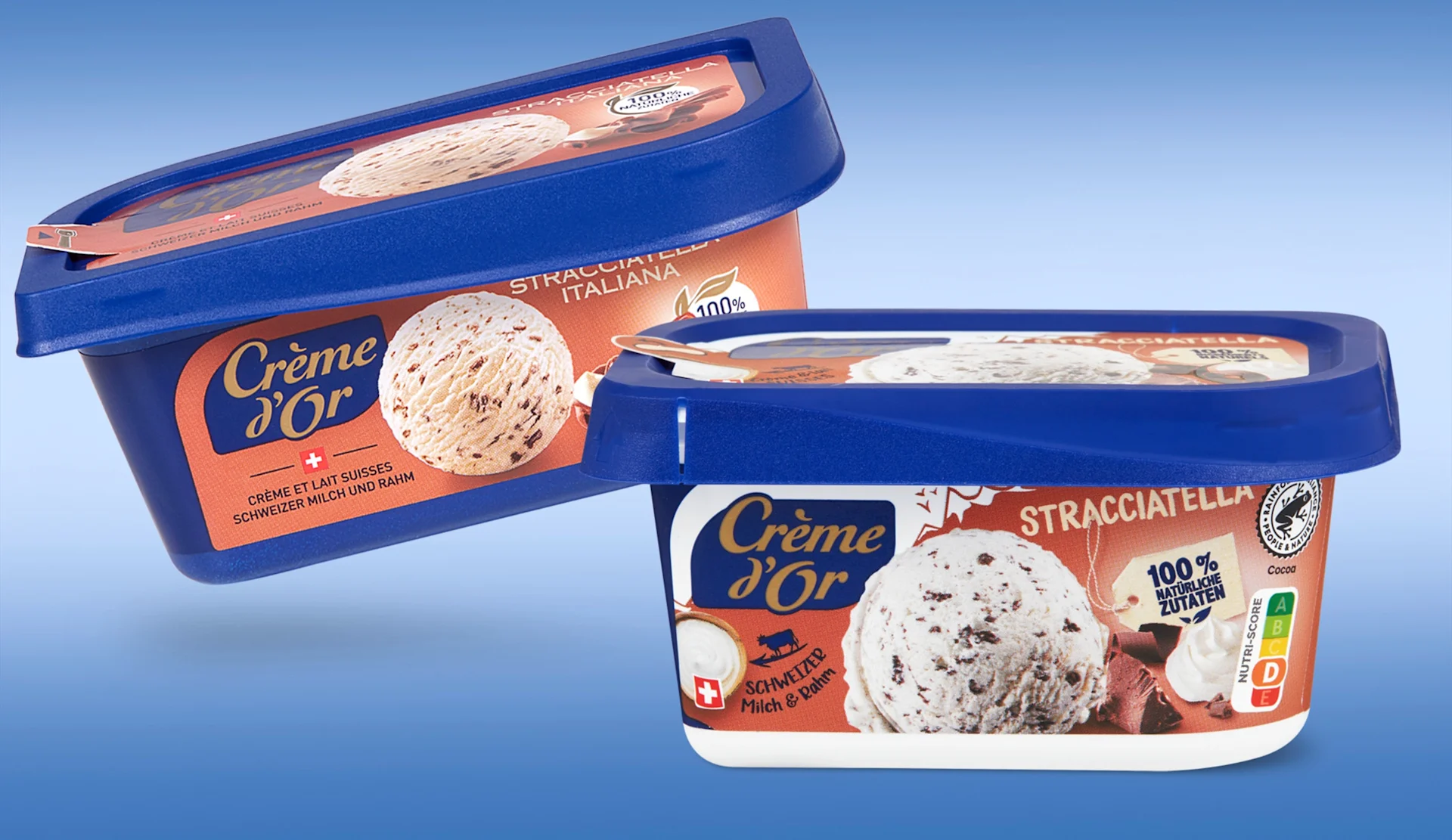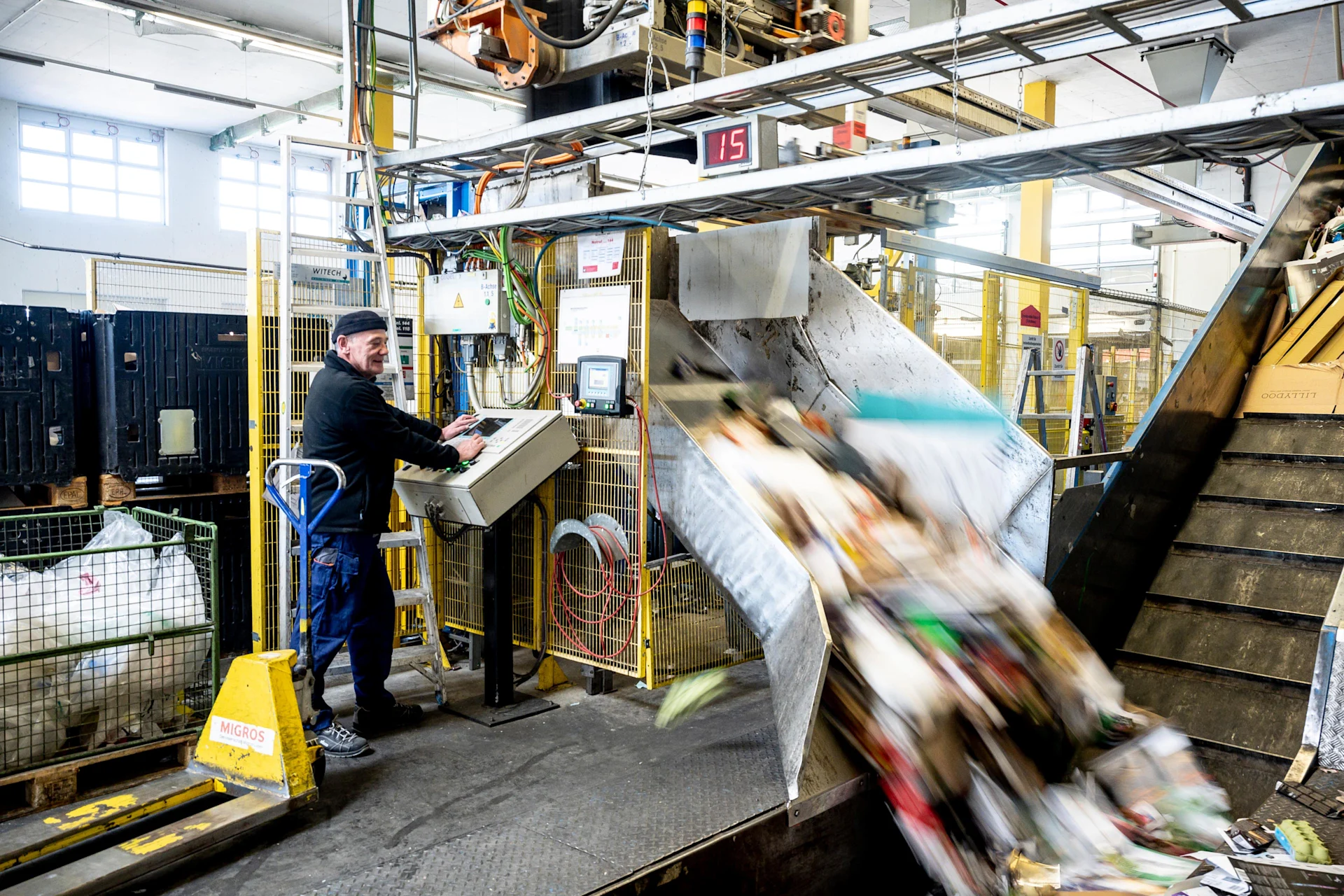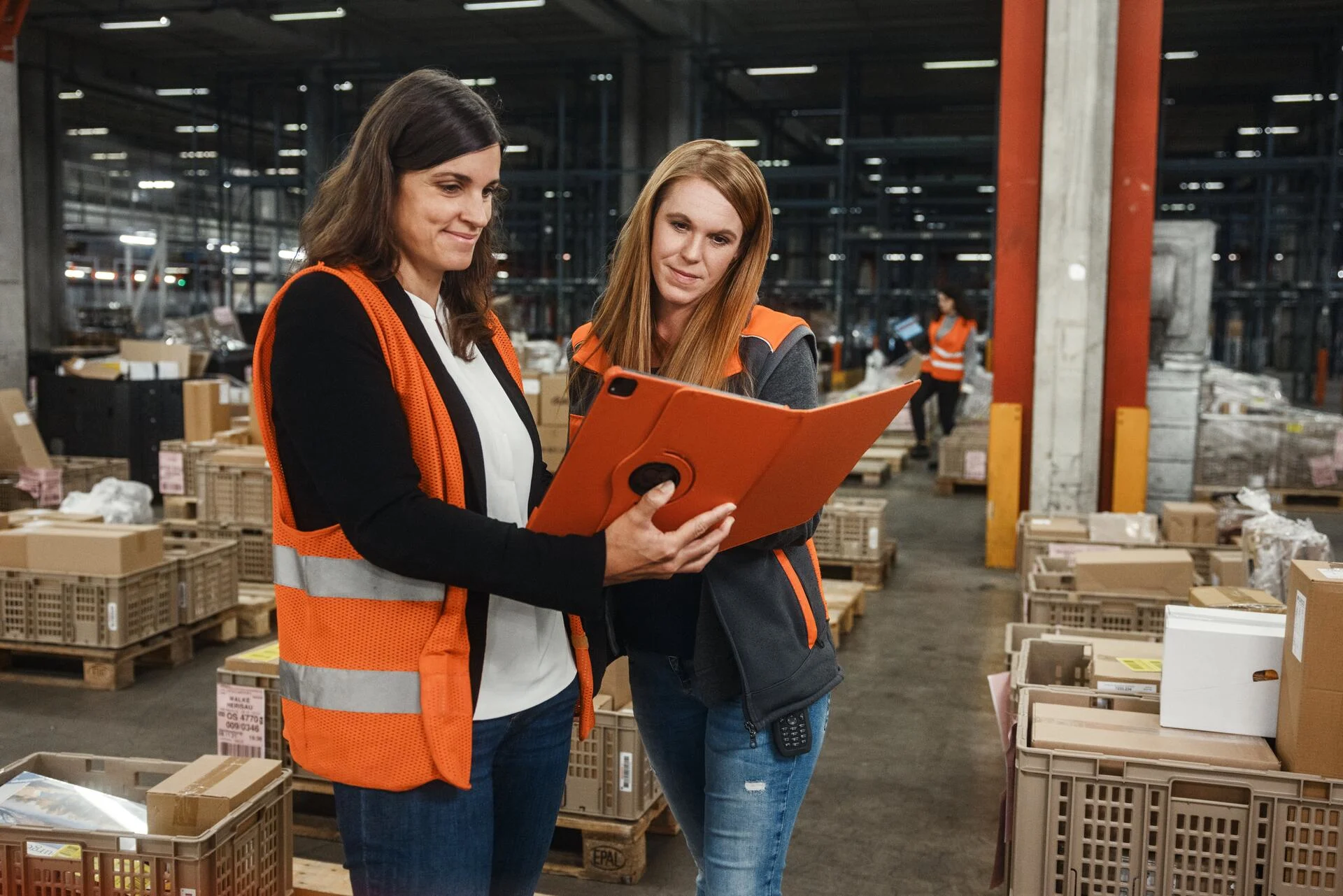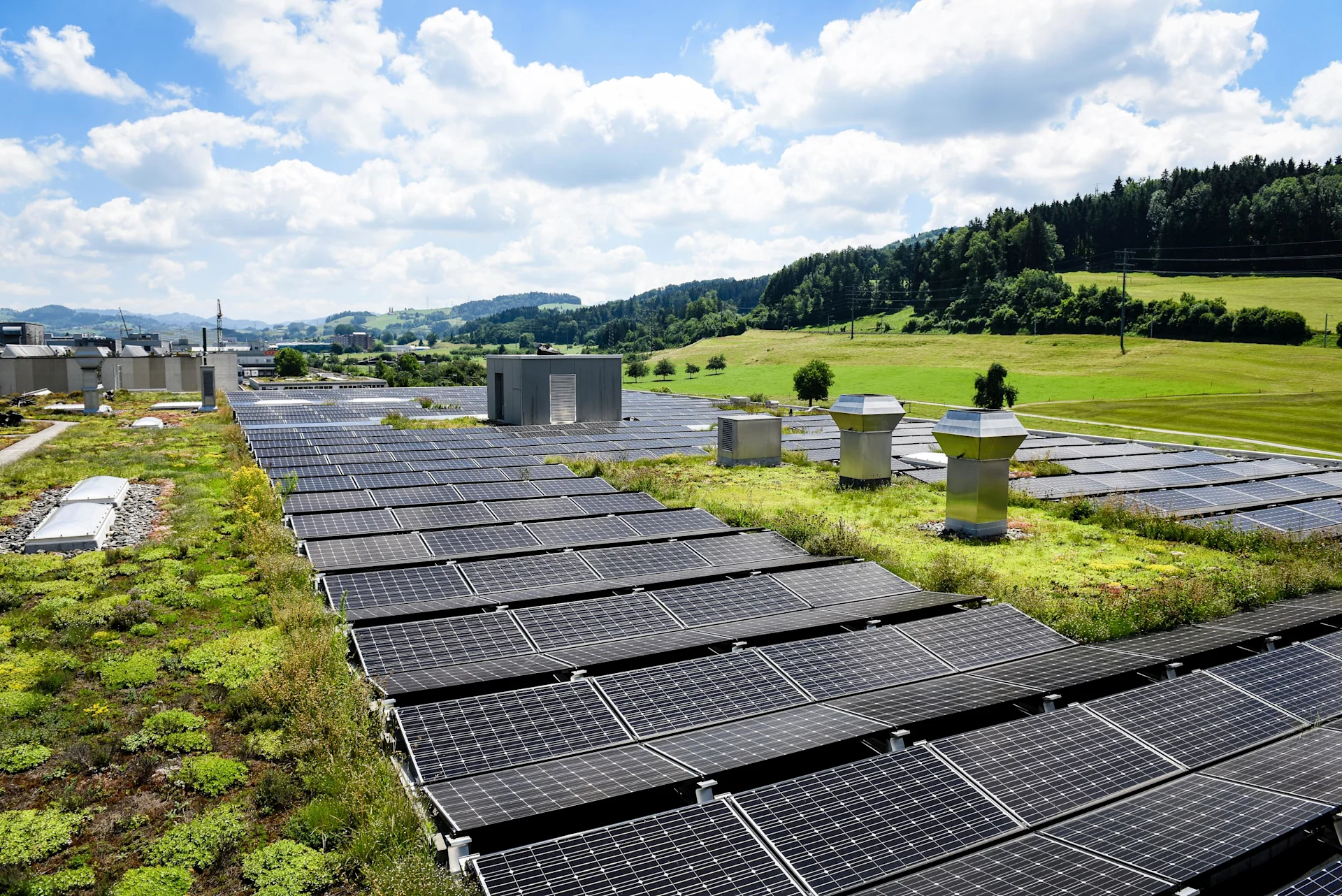Circularity
Our progress
Key figures: closing the loop and recycling
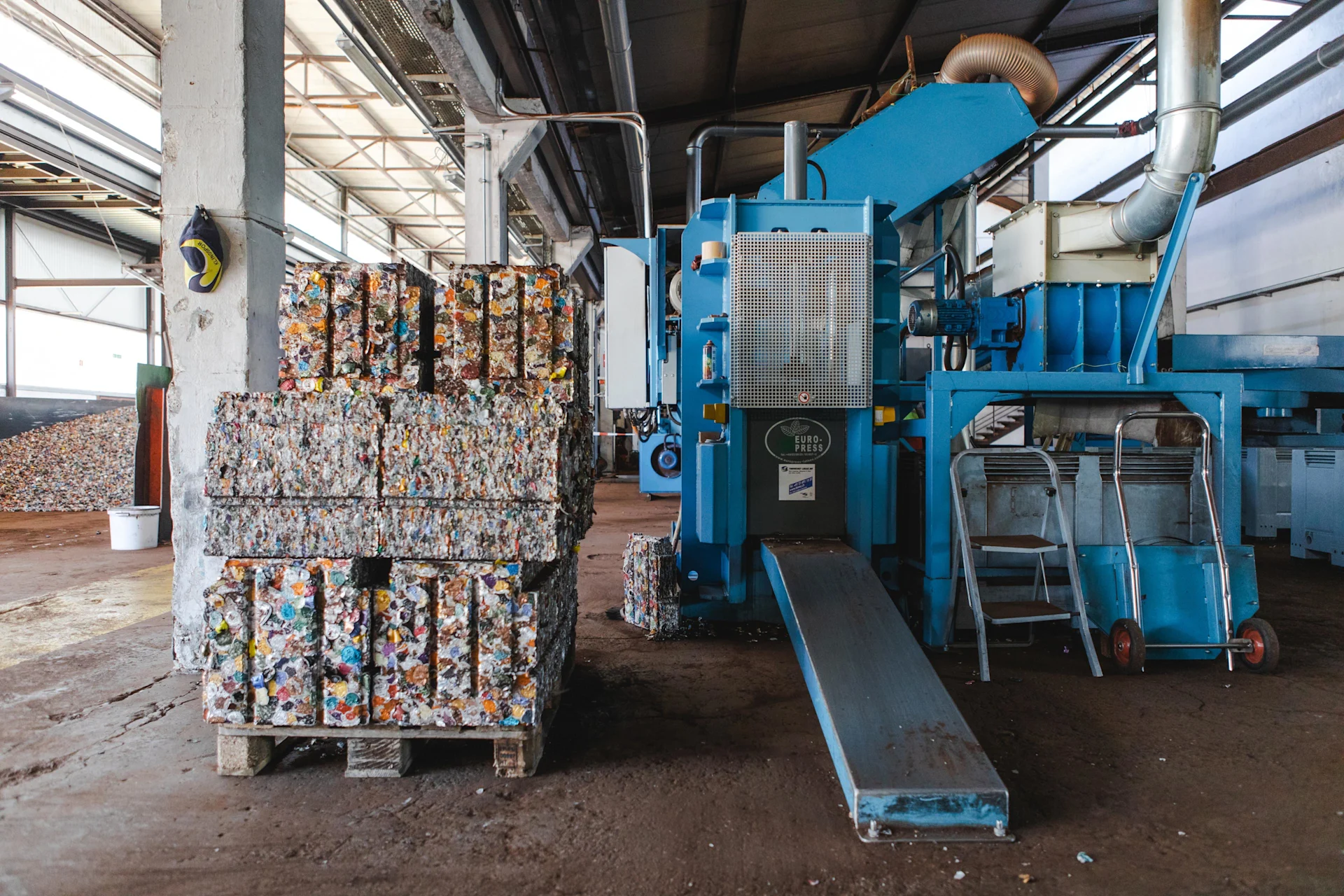
Waste avoidance and a high recycling rate are important to us. For this reason, we continuously optimise our returns, recycling and disposal processes and close our loops whenever possible. We have also set ourselves strategic goals and are transparent about our progress.
How we collect our data
All company locations that produce relevant quantities of waste (i.e. over 50 tonnes per year) systematically record their waste data in a Group-wide database. This is mostly done on a monthly basis and less frequently on an annual basis and mainly affects cooperative retailing and Migros Industrie locations. Both operational waste from sales and production as well as customer waste that is returned to the stores are recorded.
The waste from cooperative retailing and Migros Industrie accounts for just under 90% of the waste volume of the entire Migros Group. The focus of the reported waste categories (“Composition of waste” tables) and recycling processes (“Recycling processes” table) is therefore on these two most relevant business areas.
To ensure the consistency of the data across the Group, it is recorded using a standardised methodology and predefined input screens. This includes the quantities of waste in tonnes, the waste fractions, the disposal processes as well as the recipients and costs of disposal. Data quality is ensured by means of the 6-eyes principle. First, the data is entered on site at the location and approved there by another responsible person. A central specialist at the Federation of Migros Cooperatives then checks the plausibility of all the data for the entire Migros Group and finally releases it. Only then is the data published internally and externally.
More about our sustainability governance
What we have achieved so far
Waste
Most of the Migros Group companies that generate the largest quantities of waste are also the owners of the operations centres, branches and production sites. This means that we implement waste management according to our own rules and monitor the quality of waste collection, sorting and storage according to strict criteria. However, we also implement our own waste concepts at rented locations or have the necessary collection and sorting infrastructure at our disposal.
At locations where third-party companies are commissioned to manage waste, we regulate the principles and conditions by means of contractual agreements. This means that our quality standards are also met there. Our companies do not recycle or destroy waste in their own operations. All waste is recycled by qualified recycling and disposal partners.
Within the food industry, most waste falls into the categories of paper and cardboard, organic waste, plastic or refuse. Hazardous waste, on the other hand, makes up a very small proportion of the total amount of waste. Hazardous waste and hazardous substances generated in Migros Industrie are managed in accordance with the ISO 14001 standard. Hazardous waste, such as paints and varnishes, is also returned to our branches via customer returns. We hand over this hazardous waste to qualified recycling companies for professional disposal.
Waste volume
Waste volume Migros Group
1 Migros branches, Migros logistics companies, Federation of Migros Cooperatives, Monte Generoso and tegut.
2 Since 2020, additional Migros Industrie locations in Switzerland and abroad have been included in the scope of application.
3 Denner, Digitec Galaxus (including abroad) and Ex Libris; excluding migrolino and Migrol.
4 Bank and Hotelplan Switzerland.The waste data includes all locations that produce a relevant amount of waste, i.e. over 50 tonnes per year (in accordance with the limit defined as part of the Migros Group’s strategic waste management). Due to changes in the scope of consolidation (acquisitions or disposals of companies and parts of companies), there may be adjustments to the previous year’s figures each year. Waste data from the companies tegut and Ex Libris was collected for the first time in 2021, which led to an increase in waste volumes compared to previous years.
Waste categories
Composition of waste in 2024 (cooperative retailing)
The data includes waste from Migros stores, Migros logistics operations, the Federation of Migros Cooperatives, Monte Generoso and tegut.
Composition of waste 2024 (Migros Industrie)
The data includes waste from all Migros Industrie sites in Switzerland and abroad.
Recycling process
For a better understanding, the waste categories and recycling processes are presented in two separate tables. However, the following connections can be made:
Definitions of the recycling processes
Material recycling: mechanical recycling
Animal feed: feeding to pets or farm animals
Fermentation: compost or anaerobic treatment of organic waste with the aim of producing biogas and fertiliser
Refuse incineration plant (KVA), in-house incineration, cement plant: thermal-energy recovery
The relevant proportion of the Migros Group’s incinerated waste is generated in Switzerland and is incinerated in domestic refuse incineration plants (KVA). These use the heat for heating purposes and to generate electricity.
Recycling processes in detail
Recycling processes 2024 (cooperative retailing)
The data includes waste from Migros stores, Migros logistics operations, the Federation of Migros Cooperatives, Monte Generoso and tegut.
Recycling processes 2024 (Migros Industrie)
The data includes waste from all Migros Industrie sites in Switzerland and abroad.
Recycling
Waste contains valuable resources that can be reintegrated into the material cycle. At the same time, however, it harbours various environmental risks. We therefore attach great importance to either avoiding waste or recycling it as completely as possible.
Recycling rate
According to our definition, the recycling rate includes the following recycling processes: material recycling, animal feed, fermentation, composting.
Recycling rate (Migros Group)
1 Migros branches of all cooperatives, Migros logistics companies, Federation of Migros Cooperatives, Monte Generoso and tegut.
2 Denner, Digitec Galaxus (incl. abroad) and Ex Libris; excluding migrolino and Migrol
3 Migros Bank, Hotelplan SwitzerlandTarget: by the end of 2025, we will increase our recycling rate to at least 77.6%.
The goal was no longer pursued in 2024 due to the revision of the Sustainability Strategy.
Reduction of incinerated waste
Target: by the end of 2025, we will reduce the amount of non-recycled waste to a maximum of 26,286 tonnes.
Training for employees
Target: by the end of 2025, employees from 1,190 stores will be trained in waste separation.
The goal was no longer pursued in 2024 due to the revision of the Sustainability Strategy.
Customer returns
Customer returns by type of material (cooperative retailing: Migros branches and logistics companies)
1 Water filter cartridges, cream blower cartridges, CDs, hazardous waste (chemicals, sludge, paints, waste oil), light bulbs
New models for the circular economy
Target: by the end of 2025, we will test how we can profit from circular economy approaches using three prototypes.
The goal was no longer pursued in 2024 due to the revision of the Sustainability Strategy.
Packaging and plastic
Packaging: the maxim of ‘as little as possible, as much as necessary’ applies. And, of course, we promote circularity
Expansion of zero-waste filling stations
Target: by the end of 2025, 55 stores in 10 cooperatives will offer zero-waste filling stations for food.
The goal was no longer pursued in 2024 due to the revision of the Sustainability Strategy.
Products without microplastics
Target: by the end of 2025, none of our products will contain any microplastics.
The goal was no longer pursued in 2024 due to the revision of the Sustainability Strategy.
Expansion of unpackaged sales of fruit and vegetables
Target: by the end of 2025, at least one product in each product group (e.g. potatoes or tomatoes) in our supermarkets and hypermarkets will be offered unpackaged and at least one product in plastic-free packaging.
The goal was no longer pursued in 2024 due to the revision of the Sustainability Strategy.
Reduction of packaging materials
Target: by the end of 2025, we will reduce the packaging material used by 5% compared to 2020.
Comment on the target status at the end of 2024:
The target is not on track. Various projects to enable target attainment are in the pipeline for 2025.
Increasing the recyclability of packaging
Target: all packaging will be recyclable by the end of 2025.
Comment on the target status at the end of 2024:
We are working hard to make the packaging of our own-brand products recyclable. Further projects are in the pipeline and will ensure further progress in 2025.
Increasing the proportion of recyclate in packaging
Target: by the end of 2025, all packaging will consist of 50% recycled materials.
Comment on the target status at the end of 2024:
The target was missed. Depending on the product group and packaging material, target achievement is very high. For example, many PET drinks bottles are already made from 100% recycled material, but the use of recycled cardboard or recycled PE (plastic) in direct contact with food is not (yet) possible, which makes achieving the target very challenging.
Increase in share of renewable packaging
Target: by the end of 2025, all packaging will consist of 60% renewable raw materials.
Comment on the target status at the end of 2024:
Where technically possible and environmentally sensible, we will continue to convert further packaging to renewable raw materials in the future.
Statistics on renewable and non-renewable packaging materials
As we have a direct influence on packaging design through our own brands, we only collect packaging volumes for Migros Industrie (all products including exports). Migros Industrie products also cover a large part of the range in Migros supermarkets. This excludes third-party brand products and Migros supermarkets’ own brands that are produced by third-party suppliers.
Definition of non-renewable packaging materials:
Packaging materials made from non-renewable raw materials (plastics, aluminium, tinplate, glass)
Definition of renewable packaging materials:
Packaging materials based on wood (cardboard, paper, fibre material, etc.)
Packaging materials based on renewable raw materials (PET from CO2 recycling, bioplastics, etc.)
Quantity of renewable and non-renewable packaging materials (Migros Industrie)
The increase in volumes after 2020 is due to improved data quality.
Recycled raw materials purchased (Migros Industrie)
Food Waste
We have been committed to combating food waste for years. We pursue clear goals to reduce food waste along the entire value chain.
Reduction in total proportion of food waste
Target: by the end of 2025, we will reduce total food waste by 20% to 1.07%.
Comment on the target status at the end of 2024:
The target was narrowly missed. The waste rate was cut for the second consecutive year thanks to a wide range of internal activities and as part of the action plan.
Measures in the upstream and downstream value chain
Target: we will support the upstream and downstream value chain by measurably reducing its food waste. At least one measure is to be implemented every year until 2025.
Comment on the target status at the end of 2024:
Thanks to enhanced collaboration with Tischlein deck dich and Circunis, more bananas could be saved in 2024. Additionally, Migros Luzern takes surplus fruits and vegetables from local producers through short-term actions.
Dive deeper into the topic
There are exciting stories behind the figures. Find out more about our commitment to circularity in our Stories.


